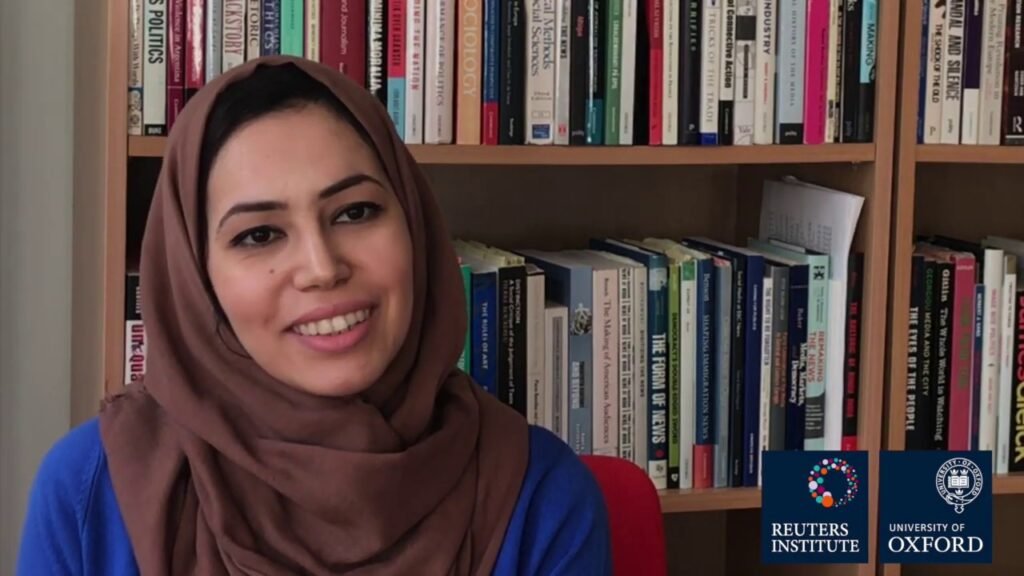Gaza journalists risk their lives to report under siege, using open-source tools and global networks. Despite deaths, famine, and censorship, they keep Gaza’s story alive, ensuring the world hears unfiltered truths.
“As long as I can share the voices of the people in Gaza, I will – whether I am with them or abroad,” said Palestinian journalist Nagham Mohanna, now reporting from exile after fleeing in late 2023. Her words capture the dilemma facing Gazan journalists scattered across the world: how to keep telling Gaza’s story when Israel has barred international press access and killed almost 200 Palestinian reporters since October 2023.
Some, like Mohanna, continue through trusted contacts and colleagues. “Our souls are still stuck there,” she said. “I can’t stop thinking about my family trapped inside. Those of us who left are not okay.” Survivor’s guilt mixes with her duty to amplify voices.
Another is Plestia Alaqad, the 23-year-old who documented Gaza’s early months of war on Instagram before leaving in November 2023. She now writes and broadcasts from abroad, still in touch with colleagues who fact-check her reporting. “You report on hunger while you yourself are starving,” she explained. “I chose to interview a nine-year-old to show how our children, at an age of innocence, now know the words genocide and quadcopter. That should break the world’s heart.”
Inside Gaza, others keep working despite devastation. Bisan Owda, a filmmaker turned war reporter with millions of followers, films not only death but resilience. “Resilience is Palestinian,” she posted recently, showing children smiling through famine. Her raw frontline videos have become a lifeline for international media cut off from Gaza.
Motaz Azaiza, a 24-year-old photojournalist, documented mass graves, rubble, and bombed hospitals until he, too, left. “The phase of risking your life to show what is happening is now over,” he said. “Now it is about trying to survive.” His images, shared globally, reshaped perceptions of the war.
Others have not survived. Hussam al-Masri, a Reuters cameraman, was killed in late August 2025 during a live broadcast outside Nasser Hospital. He had been living in a tent with his cancer-stricken wife and four children. Mariam Abu Dagga, a freelance visual journalist and mother, was killed alongside him, as were Mohammed Salama of Al Jazeera—newly engaged and remembered for his professionalism—plus freelancers Moaz Abu Taha and Ahmed Abu Aziz. Their deaths, in what colleagues described as a “double-tap” strike, underscore the mortal risk facing Gaza’s press corps.
“Even the Japanese hosts were astonished at how many journalists had been lost in Gaza,” noted one colleague. “Instead of aid flowing to them, their deaths show the imbalance—people who should be protected as messengers are being erased.”
For journalists outside Gaza, open-source intelligence (OSINT) has become essential. Investigators like the Guardian’s Manisha Ganguly use satellite imagery, social media footage, and bullet forensics to corroborate events. “If you are not using visual evidence to verify ground truths, you are left missing key facts,” she explained. Yet even she relies on Gazan contacts, risking their lives.
International reporters have resorted to boarding aid flights over Gaza, peering through plane windows at the devastation below. Freelance journalist Clothilde Goujard described the view as “extremely shocking and moving… knowing is very different from seeing.” But these symbolic glimpses cannot replace local journalists documenting hunger and bombardment daily.
“We don’t need saviors,” said Mohanna. “We need recognition that Gaza’s journalists are professionals who have given everything—even their lives—to tell the truth.”
From tents in Rafah to newsrooms abroad, from OSINT labs to aid flights, Gaza’s story still reaches the world. But it does so because of Gazan journalists—those alive, those in exile, and those killed with cameras in hand.
This story first appeared on the Reuters Institute website and has been reproduced here for the Pakistani audience.
Link to the original story is: Reuters Institute – How journalists are covering Gaza’s story from afar
Pic Credit, Courtesy: Reuters Institute Website


